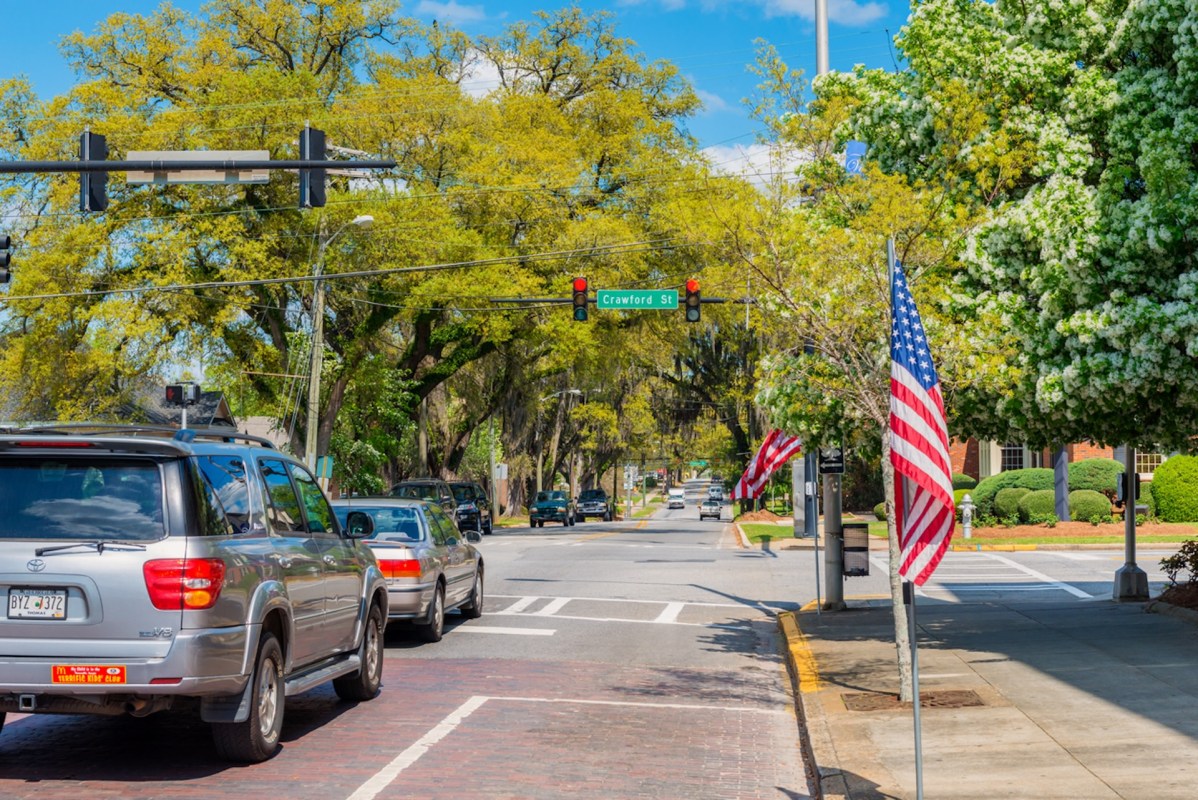The redevelopment of a city in Georgia is showing what can be achieved when focus is put on walkable design.
Thomasville, a majority African American city of 18,000 residents, has adopted a new blueprint that encourages the growth of walkable centers in suburban spots and neighborhoods surrounding downtown.
The idea of the Thomasville Blueprint 2028 plan was to boost growth in the area by making it more accessible and to provide new public spaces for outdoor social and cultural events, all while restoring several historically African American main streets.
Thomasville's reinvention was detailed by the CNU Journal Public Square's Robert Steuteville, who noted that the plan devised in 2018 was interrupted by the COVID-19 pandemic but has still seen significant progress.
By putting the project within a 10-year time frame, rather than the typical 20- to 30-year plans seen for these types of initiatives, implementation of the suggested measures has been much quicker.
Among the new community spaces in Thomasville is a 1,200-seater downtown amphitheater, which now hosts concerts on a site that was previously a dirt parking lot.
When not in use, the amphitheater and its surrounding areas double as a public green that includes public restrooms.
Meanwhile, an area known as "The Bottom," a 19th-century district that has a history of African American and Jewish businesses, has been revitalized.
"Completed two years after the plan's adoption, the two-block streetscape included safety upgrades for pedestrians, new sidewalks, a raised pedestrian intersection, and better street lighting," Steuteville described.
The redevelopment has helped to slow down traffic in the area, and it has also seen three empty storefronts filled.
Elsewhere, a new hotel from Courtyard by Marriott has entered the area facing South Dawson Street and Remington Avenue.
Walkable urban spaces bring numerous benefits for local residents. In addition to making the area more accessible on foot, such plans reduce the need for polluting vehicles in order to enjoy the benefits of a city or town.
Thus, air quality is better thanks to a reduction in particulate matter and toxins that vehicles create — reducing the risk of cardiovascular and respiratory problems for those who live in surrounding spots.
Other towns and cities that have focused on pedestrianization have reaped the rewards. Pontevedra in Spain, for example, banned most cars in 1999 and has since seen a significant reduction in car-related deaths, while air pollution has been reduced by as much as 67%, per Politico.
In Mont-Royal in Montreal, Canada, the closure of a major city street in summer allowed for a 1.5-mile pedestrian walkway that encouraged the residents to cycle and walk rather than travel by car, allowing locals the opportunity to exercise daily and bringing an outdoor "living room" featuring 2,700 seats.
In addition, walkable cities or towns can benefit local property prices. According to real estate platform Redfin — which runs a website called Walk Score that ranks cities in terms of walkability — house values will increase in areas where it's more viable to travel on foot.
Join our free newsletter for cool news and actionable info that makes it easy to help yourself while helping the planet.









